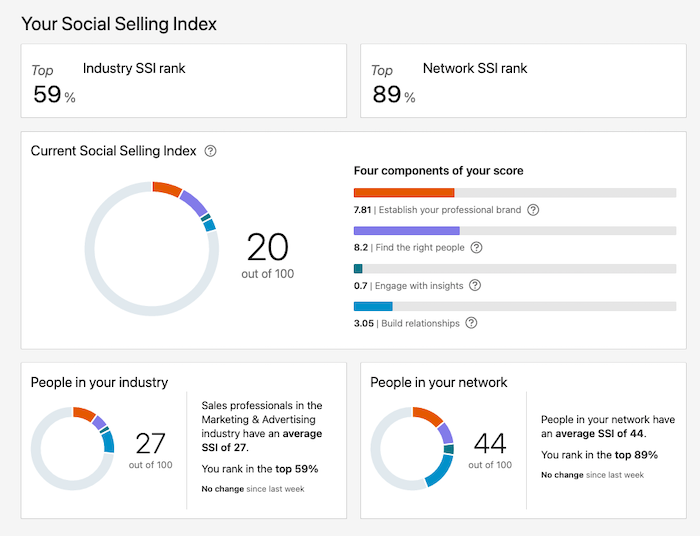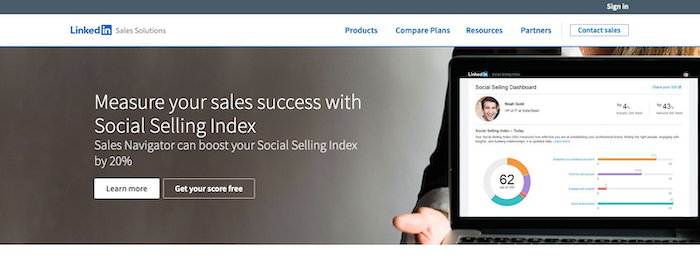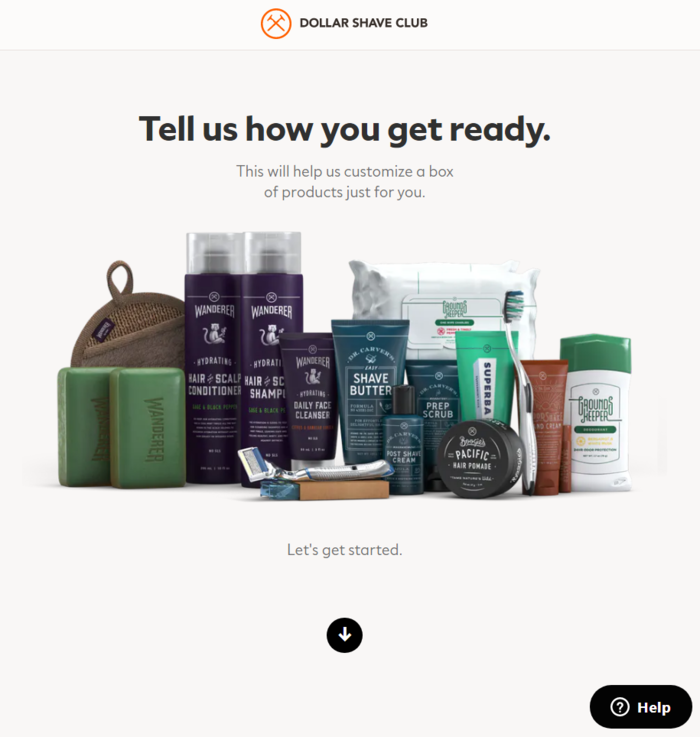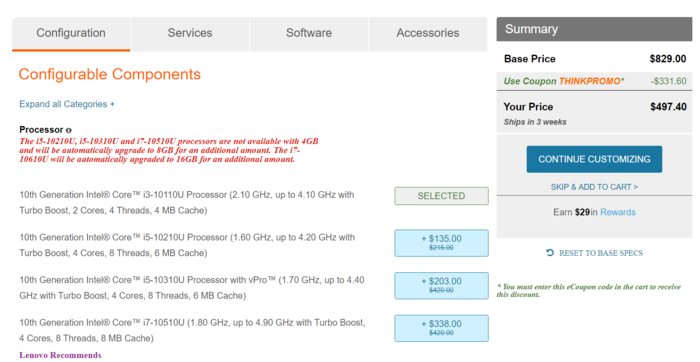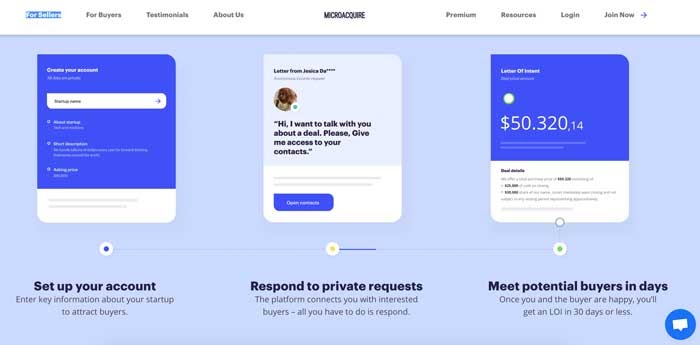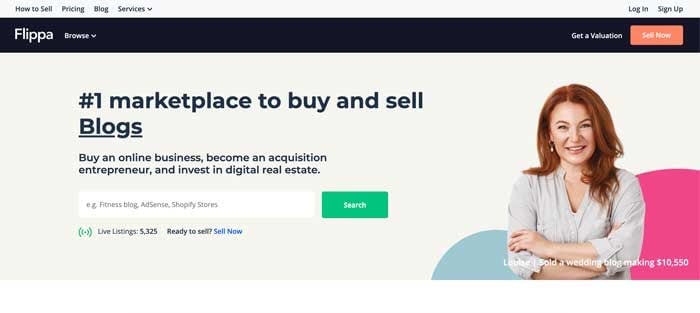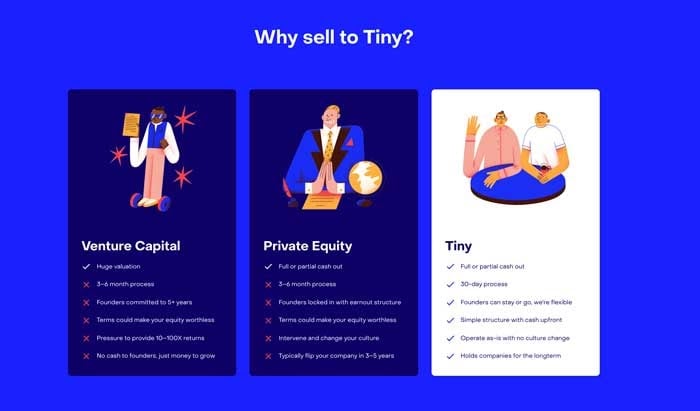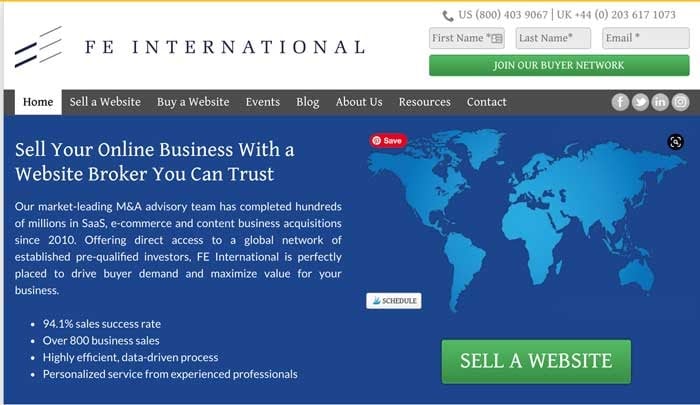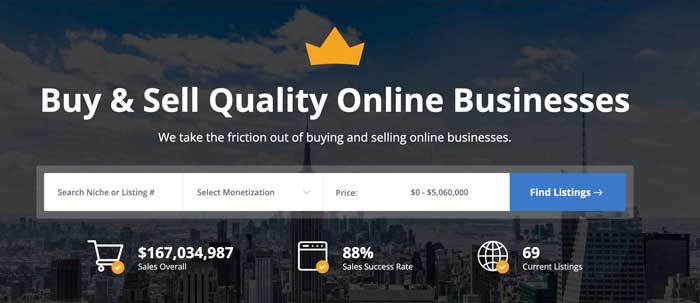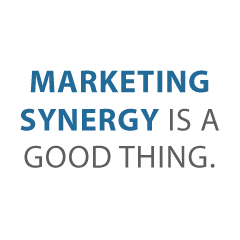The Hottest and Most Brilliant Business Tips for YOU – Smash the Summer Selling Slump and More
Our research ninjas at Credit Suite smuggled out ten amazing business tips for you! Be fierce and score in business with the best tips around the web. You can use them today and see fast results. You can take that to the bank – these are foolproof! Smash your summer selling slump and keep your revenues so hot you could fry an egg on them. And more!
Stop making stupid decisions and start powering up your business. Demolish your business nightmares and start celebrating as your business fulfills its promise.
And these brilliant business tips are all here for free! So settle in and scoop up these tantalizing goodies before your competition does!
#10. Your Marketing WILL Be Televised
Our first jaw-dropping tip is all about cutting costs and improving customer experience with your business’s TV set. That is, if your business has one. Lots of businesses with waiting rooms do. Noobpreneur says there are a few things you can do to take advantage of this bit of advertising real estate.
Our favorite tip was not to advertise your own business. Although of course we can see and applaud the use of a business TV set for this particular purpose.
Nope. What we liked better was using the TV to advertise other businesses. Of course you will charge for the privilege. And keep in mind, this will not succeed if your business isn’t much of a business leader in the area. But if your business fits the bill, then why not try this?
Pro tip: why not reach out directly to related businesses? So, for example, pharmacies could sell advertising space to local dentists. Day spas could sell ad space to local aesthetician-type businesses, such as hairdressers. Marketing synergy is a good thing.
#9. Do You Speak Design?
The next awesome tip is about presenting UI/UX designs to non-designers. Dribbble tells us one issue is just plain communicating. So, in the interests of full disclosure – UI means user interface. And UX means user experience.
The idea here is to make your website easy and enjoyable. And it should be clear and easy to understand. If you’ve ever loaded a s…l…o…w website or didn’t know how to get back to an earlier page, then you’ve witnessed, respectively, a lousy user interface and a terrible user experience.
What we really liked were the emphases on identifying a problem and demonstrating how your solution works. For the money people, this is key. After all, why pay for a design overhaul if you’re still left with the same old problems?

If you are as passionate about succeeding in business as we are, please help us spread the word about how to take the plunge and save time and money – and your sanity! Smash the summer selling slump and keep your business as hot as a summer sidewalk.
#8. Push-Me/Pull-You
Our following life-changing tip concerns using pull marketing when push marketing just plain isn’t cutting it. Startup Professionals lays it all out for us.
One thing which surprised us was how there are still some 25% of all businesses which don’t use social media at all.
Huh?
We can’t conceive of that these days.
And of the 75% which do, there are a number which just monitor and don’t engage.
Don’t be one of those companies. Not engaging, or worse, not being on social media at all, is like leaving free stuff behind. You’re tossing away free and (pretty) easy chances to get your brand out there.
Why the heck would you do that?
#7. How Much For Just the Planet?
For our next sensational tip, we looked at setting the proper prices for your goods or services. DIY Marketers has all the details.
This is a terrific article, and we recommend reading the whole thing as the process makes the most sense when you look at it in order. It’s a fascinating exercise. But it all starts with one thing – how much do you want to be making?
Say what?
Now this makes more sense than you might think at first glance. Consider this: we have covered goals many, many times here. And what’s the first thing you need for a goal to succeed?
Anyone?
Bueller? Bueller?
You need a target!
And what better target than to decide how much money you want to make?
A Fer Instance
Let’s play with a few quick numbers, for illustrative purposes only. So let’s say you want to make $100,000 per year. And let’s further say that you sell widgets. If you sell one widget at $100,000 then you’re done, right?
Not so fast.
More expensive goods and services require excellent customer service. So if you sell your one $100,000 widget, then you maybe you need a dedicated person to handle that account. They might not handle any other accounts, in particular if the customer is fussy.
So if you have to hire a dedicated account manager for $50,000 per year, then you’re only making a $50,000 profit on your one overpriced widget ($100,000 profit – $50,000 in overhead costs for your account manager’s annual salary).
Now you need to sell two widgets. And you need an account manager for each of them. This is a simplistic sample. So we’re not looking at other costs such as manufacturing or shipping.
Now let’s sell your widget for $10,000. Your account manager may be able to handle ten accounts now (just to use a simple number here). Understandably, the customer service expectations are lower for cheaper widgets. So if your account manager still makes $50,000 per year, then once five widgets are sold, you’ve paid your account manager’s salary.
Sell 20 widgets and you’ve made your profit (you’re paying 2 account managers at $50,000 per year). If you give your account managers raises, you need to sell more product, or raise the price.
But at least you have a measurable goal. You know how close you are to making it. That matters more than nearly anything when it comes to pricing and budgeting.
#6. Improve Your Selling!
This tip is so helpful, and it works! The Work At Home Woman gives us the lowdown on how to get better at selling.
This one, of course, goes far beyond smashing a summer selling slump. It goes directly to the ultimate success – or failure – of your business.
Confidence Sells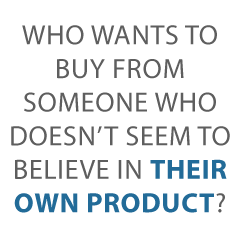
This was our absolute favorite tip. Of course, this can be easier said than done. But the bottom line is, we like to buy from confident people. And there is a huge reason for this.
Who wants to buy from someone who doesn’t seem to believe in their own product?
So no matter if you are desperate in real life – and don’t think there aren’t any seasoned salespeople who aren’t – do your level best not to show it while selling. Now, that may be easier said than done.
But practicing, as the article says, is a great idea. No matter what, you need to know your product or service backwards and forwards. And a quick pro tip from your intrepid blog writer – not having to worry about knowing what to say rather effectively removes one reason to be nervous.
Get out of your summer selling slump and for gosh sakes, don’t let it turn into a winter sales slump.
#5. Smash Your Summer Selling Slump
Grab this mind-blowing tip while it’s hot!
The summer selling slump is real. Fundera tells us how to smash it.
From June to September, Things Get S…L…O…W
Even if you don’t actually have a summer selling slump, the truth of the matter is, your employees are going to be distracted.
The kids are out of school – and perhaps underfoot. It’s light out longer, so the end of the business day doesn’t coincide with nightfall. As a result, the days might feel longer, or shorter. It can be a bit disconcerting during about a month before or after the solstice. In all fairness, the same can happen around the time of the winter solstice.
We loved that some of the best suggestions had to do with keeping employees happy!
Keep Your Employees Happy
A few of these may very well seem like no-brainers. For example, creating Friday hours and allowing work from home seem to be almost intuitive. And so is changing to a casual dress code, even if it’s only for one day a week.
We also liked the idea of hiring a passel of summer interns. They can bring in a fresh perspective, even while they do the scut work. It’s hard to have a summer selling slump when there are new people around, with new perspectives.
A True Story
Over two decades ago, your intrepid blog writer worked in the insurance industry. Egad, has it really been that long? Eek.
But I digress.
Now, keep in mind that this is before businesses got too comfortable with the internet. And it is also before casual Fridays were the norm, rather than the exception.
So what happened?
We did what we could. And since this was an office in beautiful downtown Boston, there were plenty of places to get the signature food of the summer.
I’m talkin’ ‘bout ice cream, of course.
We used to get cones every Friday, just after lunch. So it would be maybe 2 PM or thereabouts. This activity did not take too long. It had the added bonus of getting outside, however briefly. We would come back to the office if we were not finished beyond a certain time. That was around 1:30 if memory serves.
It was fun and easy. And it didn’t even cost the company any money. We bought our own cones. This tiny break made it a lot more tolerable to sit in an office, in a suit, no less, during the best weather of the year.
Keep Your Customers and Prospects Happy
Of course, one part of a summer selling slump directly relates to your customers and prospects. Unless you want your employees to just sit around and play backgammon all day long, you are going to want to do something or other to bring in revenue.
So we really liked the idea of test launching a new product. In particular, if your website isn’t too busy, you will have an easier time of it when it comes to A/B testing and other details that go along with launching a product. Now, we would not recommend launching something big during this time. But if you have something minor, or just an extra to fling to the universe, why not do so during the slow months?

If you are as passionate about succeeding in business as we are, please help us spread the word about how to take the plunge and save time and money – and your sanity! Smash the summer selling slump and keep your business as hot as a summer sidewalk.
#4. Let the Leads Come to You
Check out this spectacular tip, all about effective inboard marketing strategies. Word Stream says it’s all about the quality content. That is, the high quality content.
One excellent point W0rd Stream makes at the very start is something we have been observing for quite a while now.
There is just a ton of content out there. And it comes at all of us, 24/7. So what is happening is, essentially, people are tuning out a lot of that content.
Don’t act so surprised! You do it. I do it. Everybody does it.
After all, there are just so many hours in a day. If we felt the need to consume every moment of content, every pixel of it, we would get nothing else done. Ever.
Consider this: in 2017, a good 300 hours of content was uploaded to YouTube. Every. Single Minute.
And that’s just YouTube. So it is just plain not physically possible to consume every bit of content.
As a result, we have all become curators. Like it or not, we sift through the tsunami of content. And we inevitably search for what moves us. This means that ho-hum content is not going to cut it for much longer.
So as a business, your mission is to release quality content.
What Sort of Quality Content?
The article – which we truly feel should be read in its entirety – goes over a lot of familiar forms of content. these include podcasts and, surprise! YouTube videos. And it does our hearts good to see the suggestion of books.
What is this telling us? It’s telling us that longer form content has heft. And that makes a ton of sense. We all consume the equivalent of an all-junk food diet when it comes to most content.
So throw your prospects and customers a full-course meal and they’ll see you as an expert. And that means they will trust your product or service.
#3. Don’t Be Spammy!
It’s not your imagination: this winning tip can help keep your sales emails out of prospects’ spam folders. Succeed As Your Own Boss tells us there are some tell-tale signs of spam – at least, that’s according to email carriers and internet service providers.
Some of these may be self-explanatory. For example, clean up your email address lists! The more bouncing back you get, the more you look like a spammer. And don’t email all at once – a big bulk email screams ‘Spam!’
Our favorite tip was to keep triggering words out of your emails! Those are phrases like ‘absolutely free’ or ‘instant access’.
Consider this: if your email looks like spam to you, it’ll look like spam to ISPs and email providers. And, even worse, it’ll look like spam to your customers and prospects.
You don’t want that. Ever.
#2. It’s All About the ‘Gram
Our second to last unbeatable tip can give you a new perspective on making your business Instagrammable. Small Biz Trends lets us know all about it.
For some businesses, Instagram is where they post images of their product or service. But for others, customers may be posting about the company.
For those latter businesses in particular, the idea is to showcase the work place well. Our fave tip was to create an interesting wall. That’s a real wall, by the way. The idea is, if there’s a good backdrop for photographs, then people will be all too happy to use it.
This is why you see so many exterior walls with wings or the like.
Pro tip: why not hire an artist for this? This person can even be an art student. Of course, ask for samples to be sure you like what you’re paying for.
And by the way, while this is likely to be best for businesses where the customers come there in person, why not paint an interesting exterior wall? Which just so happens to have your signage in the background?
#1. Things Can Always Get Better
We saved the best for last. For our favorite remarkable tip, we focused on how to change your business – for the better. Score says there are a number of steps you can take which will help you, no matter what sort of business you’re in.
We particularly loved two ideas – to get organized and to take a class. Both can refresh both you and your business.
Getting organized is key for your business and for you, personally. Consider all the time you may be spending looking for stuff. Now imagine having that time for something a lot more fun. Or more profitable. Or at least something which you need to get done.
Now you can.
And taking a class dovetails well with another tip, which is to get out of your comfort zone. You might be able to save time or money with what you learn. Pretty cold, eh?
But wait, there’s more!
While the article doesn’t get it, we couldn’t help but think about how taking a class in something utterly unrelated to your business can be just about as helpful.
So don’t feel confined to just taking accounting courses or software use training or the like. Unless you want to, of course.
Why not take ceramics, or philosophy, or music theory?
No learning is ever wasted.
So which one of our brilliant business tips was your favorite? And which one will you be implementing now?

If you are as passionate about succeeding in business as we are, please help us spread the word about how to take the plunge and save time and money – and your sanity! Smash the summer selling slump and keep your business as hot as a summer sidewalk.
The post Smash the Summer Selling Slump and More –10 Brilliant Business Tips of the Week appeared first on Credit Suite.



